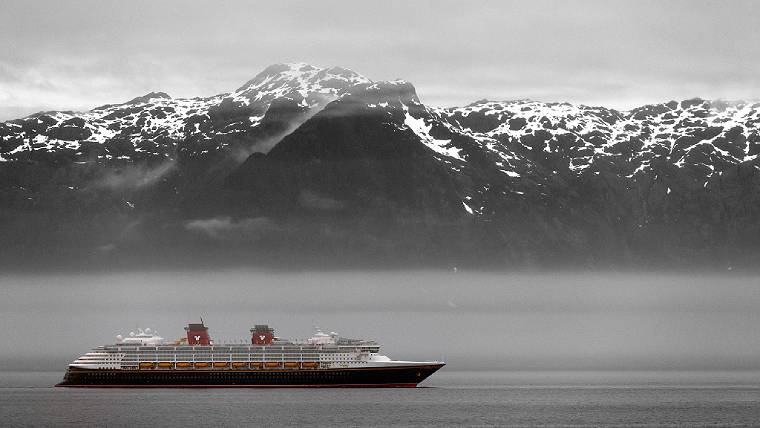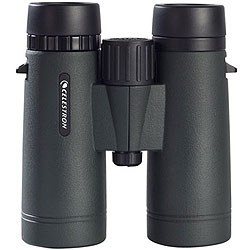Binoculars For Alaska Cruise under $200

This question comes from a reader and BBR Patreon, Vinay who is preparing for an Alaskan Trip and is looking to take with them the best pair of binoculars that they can with a maximum budget of $200.
After the trip, he would like to continue to use the binoculars for stargazing and thus the suitability for this purpose also has to also be taken into account:

Initial Question:
First-time buyer, going to Alaska and need a decent binocular for viewing wildlife and glacier calving. After the Alaska trip, I’d like to keep the binocular and use it for star gazing. Based on the reviews on your blog, I am struck between “Celestron 71332 Nature DX 8x42” and “Celestron 71404 TrailSeeker 8x42“. Both seem to be good and my budget is up to $200. What would be your suggestion based on your experience and why?
Also, can you suggest the best place/site where to purchase the bino?
Note that after some further conversations with Vinay, I also discovered that he wears glasses at all times and thus my suggestions will also take this into account by ensuring that they have a long eye relief and thus suitable for eyeglass wearers.
Best Binoculars for Cruise Ships
Much of the information and advice I give in my general Guide to the Best Binoculars for Cruise Ships is relevant to this Alaskan trip and thus I highly recommend that you first take some time to go through it as it will give you a great base with which to get started.
8x42 Configuration
As your two interests of the Alaska trip and Astronomy are quite diverse, I really like the fact that with your initial selections, you have chosen an 8x42 configuration for them both as this is generally a great option for a wide range of uses as it provides a good balance between magnification, field of view, size and light gathering ability.
Because cruise ships are so large and thus tend to be pretty stable and the waters relatively calm on cruises, I would have been tempted to recommend a higher magnification like 10x, but unless you are prepared to get a binocular with larger lenses (say 50mm), I would advise against this for very low light uses like astronomy, where light gathering and especially the size of the exit pupil is really key.
So for your particular requirements, I suggest we stick with 8x42 binoculars that offer up a generous 5.3mm exit pupil.
Zoom Binoculars?
You also asked me to recommend a good pair of zoom binoculars.
I agree with you in that because your intended uses are quite diverse, the idea of a pair of binoculars that have changeable magnifications sounds ideal.
But in my experience, unless you plan to spend a lot of money, in reality, they really are not a good idea, especially if you want to maintain a bright, high-quality view. So my advice is to stay clear of them unless you have a much larger budget.
For more on why I say this, take a look at my guide to Zoom Binoculars.
If you do want the option of having a higher magnification, I have three suggestions:
Firstly you could opt to get two fixed magnification binoculars instead, even if that means reducing the performance level of each binocular to stay within budget. I think this would be a better option than a zoom binocular.
Another option would be to get a 2x doubler that can be attached to the eyepiece of your 8x binocular so that it can be used like a monocular with 16x magnification. However, these are not super cheap and not that readily available for all models.
Lastly, you could go for something like a 10x50 or 12x50. This will obviously slightly increase the size of the binocular which is not ideal for travel but is necessary to maintain a good low light performance level for Astronomy.
For now lets stick with the 8x42 options and take if from there:
Recommendations
Celestron Trailseeker 8x42 Binoculars

Of your two Celestron options, my favorite is definitely the Trailseeker.
Whilst it is more expensive than the Nature DX, it is still within budget and you get quite a few improvements.
Upgraded Chassis & Prism Coatings
This includes a magnesium chassis instead of a polycarbonate plastic one and more importantly, the Tailseeker has Dielectric coatings on the prism instead of the silver ones used on the Nature DX.
This definitely adds to both the quality and brightness of the view and at this price range is rarely found.
Wide View
Other than that these Celestron Trailseeker 8x42 binoculars have an extremely wide view, which is always a good thing. On your trip, it will help with scanning wide open areas looking for points of interest, whilst for astronomy, it will make more of the night sky visible at any one point which makes orientation easier and often enables you to enjoy complete constellations without having to move the view about.
Eye Relief
At 17mm the amount of eye-relief is also above the 16mm that I suggest as being the minimum amount for you to ensure you can achieve the full field of view whilst using spectacles.
Selected Highlights:
- Nitrogen Purged Waterproof Magnesium Frame
- Dielectric & Phase Coated BaK-4 Roof Prisms
- Fully Multi-Coated Optics
- Very Wide Field of View: 426ft @ 1000yds
- Close Focus: 6.5ft
- 17mm of Eye Relief
- Lightweight: 23.1oz (655g)
Athlon Argos 8x42 Binoculars

I thought these binoculars were excellent when I tested them and like the Celestron above, these Athlon binoculars have dielectric mirror coatings on the prisms which at this price is seriously impressive.
However, I feel that unless you specifically want the open bridge design, the Celestron has the edge over these for your purposes as it has a magnesium chassis (this one is polycarbonate), a wider field of view and whilst the Argos technically has a longer eye relief, at .3mm the difference is negligible.
10x50 & 12x50 Versions
One potential advantage these have is like the Hawke below, Argos also supplies these in the 10x and 12x 50mm configurations.
Main Highlights:
- MSRP: $229.99, currently retailing for: $199 / £190
- Double Hinge Open Bridge Body Design
- Polymer Composite Housing
- Waterproof
- Fogproof with Argon gas
- Twist-up Eye-cups with 2 intermediate stops
- Fully Multi-Coated Optics
- Protective Exterior Lens Coatings
- BaK-4 Roof Prisms
- Phase Correction Coatings
- Dielectric Mirror Coatings
- Field of View: 371ft at 1000 yards
- Minimum Focus Distance: 13ft
- 17.3mm of Eye Relief
- Weight: 24.6oz
- Lifetime Warranty
Hawke Endurance ED 8x42 Binoculars

Like the Celestron Trailseeker, these have also won the Best Value For Money Binoculars Award and like the Celestron, these have a Magnesium Chassis.
And whilst their field of view is not quite as wide, it is still excellent, but the advantage for you is that they come with more eye-relief (18mm) with the added bonus being that the eye-piece housings, like the body, are metallic, which at this mid-range level is not often the case.
ED Glass Lenses
An upgrade on these is that they have extra-low dispersion elements within the lenses that can reduce chromatic aberrations resulting in less color fringing in the image produced an area where this binocular performed well in my tests.
Outstanding 8/10 Image Quality
The only slight question mark I have with these is that I am unsure if they use silver or dielectric prism coatings.
However, as these achieved the same outstanding score of 8/10 for image quality as the Celestron Trailseeker and Athlon Argos, my suspicion is that it is the same as well.
10x50 & 12x50 Options
Please note that Hawke Optics also makes the Endurance ED in a 10x50 and 12x50 configuration which may be of interest to you.
Main Details:
- Mid Price Binoculars, approx: $219 / £180
- Single, Top Hinge Body Design
- Magnesium Housing
- Water & Fog Proof
- ED Glass Elements in the Lenses
- Fully Multi-Coated Optics
- BaK-4 Roof Prisms
- Phase Corrected
- Silver/ Dielectric Mirror Coatings?
- Field of View: 388ft at 1000 yards
- Minimum Focus Distance: 6.6ft
- 18mm of Eye Relief
Conclusion
Your initial choices were pretty much spot on, especially with the Celestron Nature Trailseeker binoculars which I would definitely recommend along with the Hawke Endurance ED and the Athlon Argos.
All three are closely matched in this very competitive price range and I am sure that whichever one you choose, you will be more than satisfied with and it may just come down to a few minor details or which one you prefer the look of.

Need Some Binocular Advice?
If you have a binocular or optics related question that you would like me to try and answer for you, then I would love to hear from you: send your question to me here.
Photo Credit: The photo of the Alaskan Cruise Ship used at the top of this page was taken by Wilson Hui. https://www.flickr.com/photos/wilsonhui/34954515560

 Article | Posted by Best Binocular Reviews
Article | Posted by Best Binocular Reviews 
 Categories:
Categories:  Tags:
Tags: 
